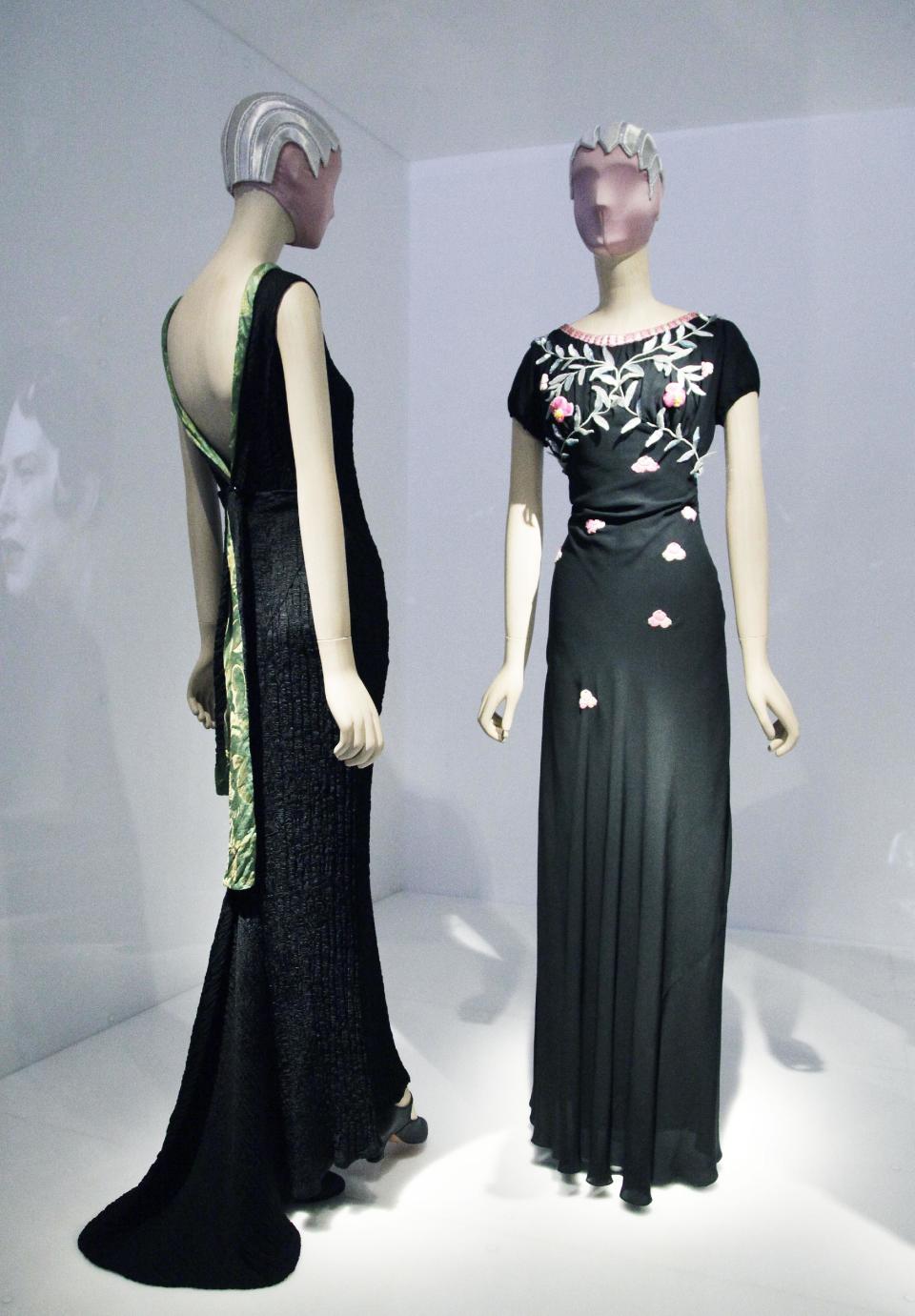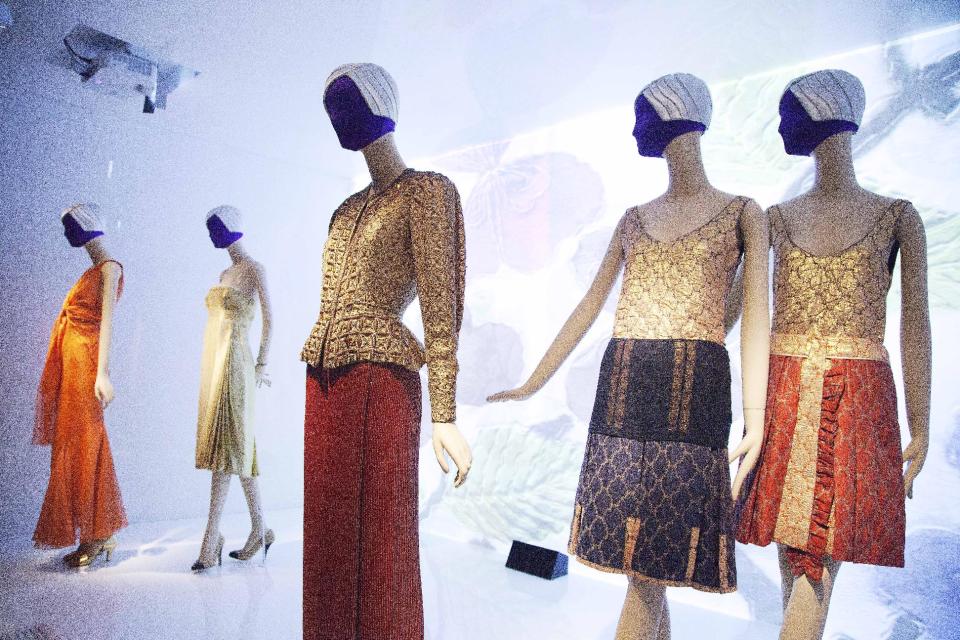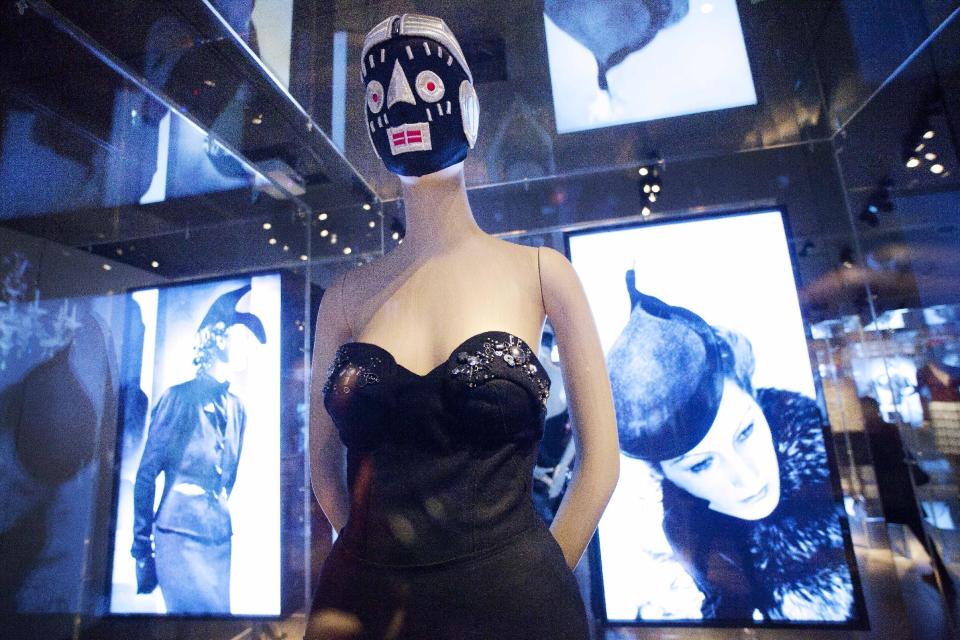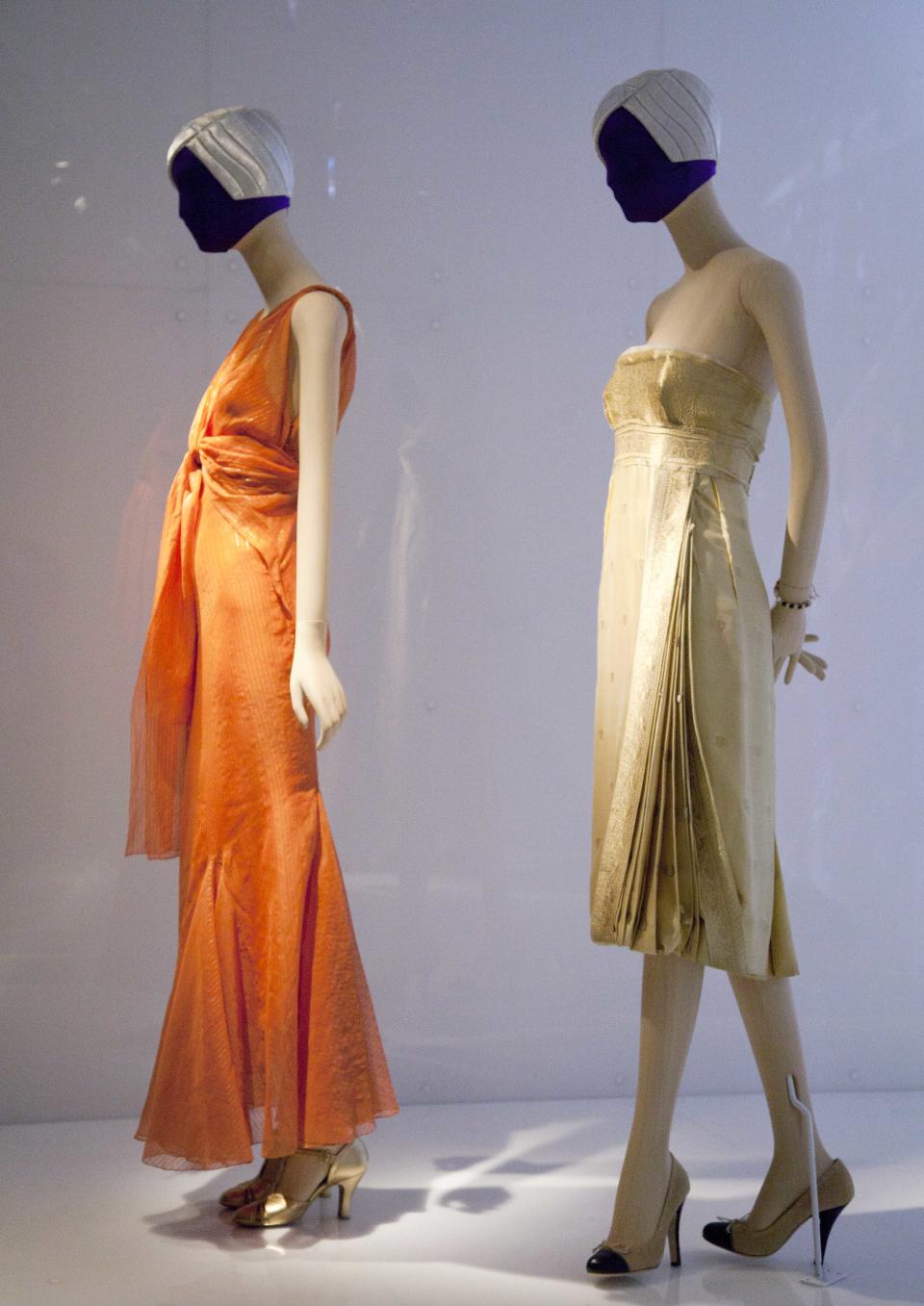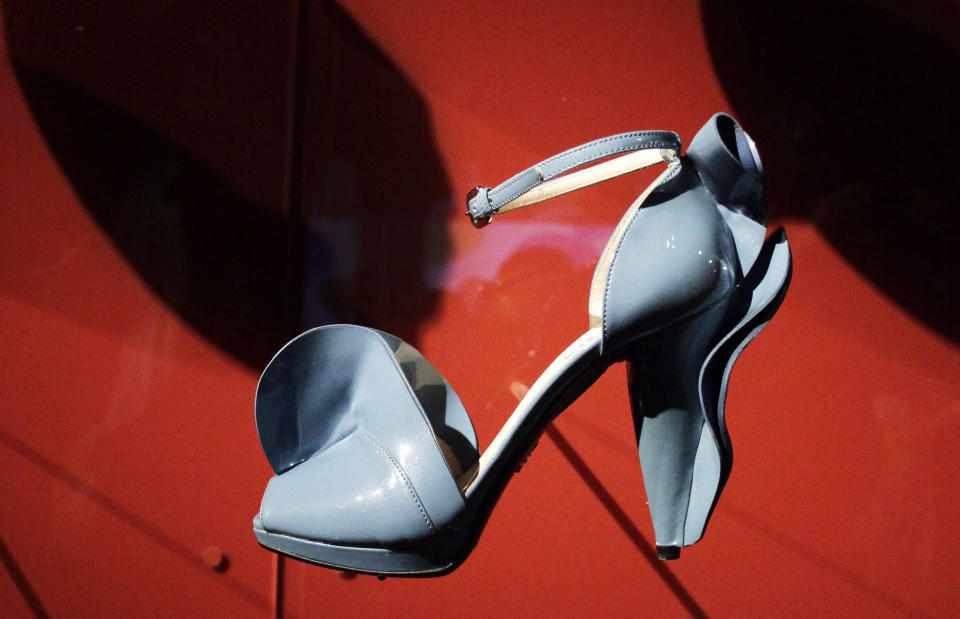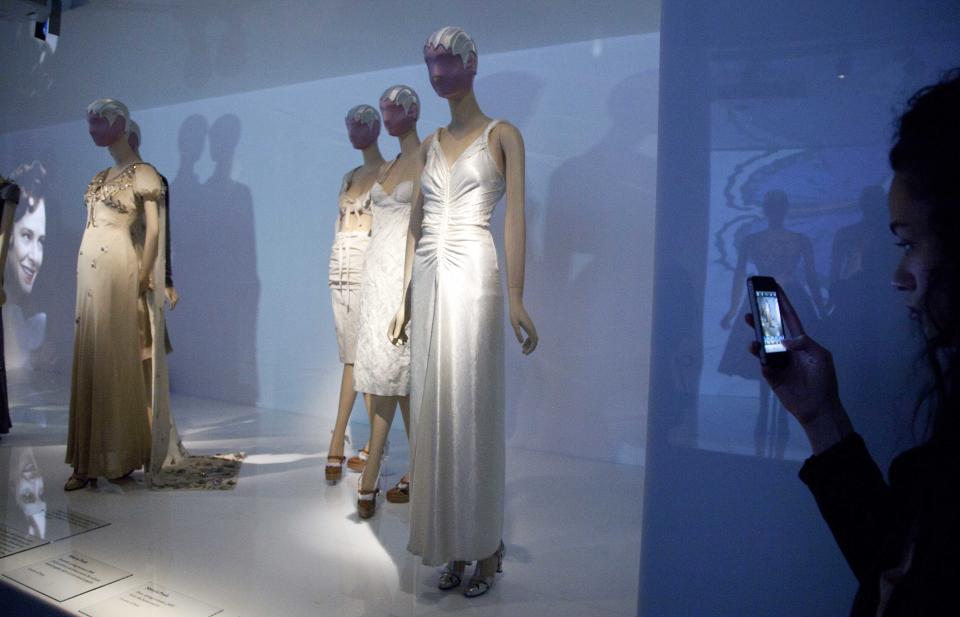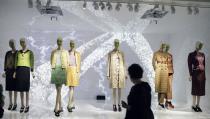Fly on the wall at Prada and Schiaparelli's table
NEW YORK (AP) — Like bookends, Elsa Schiaparelli and Miuccia Prada sit at opposite ends of a long, elegant table for their chat. There are crystal wineglasses and an ornate chandelier. They cover fashion, of course, but get into broader topics of politics and exotic places, feminism and popular culture.
The banter is lively, thoughtful and friendly, although sometimes they have very different opinions and aren't afraid to voice them. Schiaparelli says the top of an outfit is the most important because in her day (the 1930s-'40s), when Cafe Society was all the rage, women were seen only from the waist up, sitting at a restaurant table. More than 50 years later, Prada put the emphasis on what's below the belt because that's what she found more dynamic and exciting.
"The skirt has always been one of my primary focuses. Everyone knows that you have to be very beautiful from the waist up, and less sophisticated from the waist down. But to me the waist up is more spiritual, more intellectual, while the waist down is more basic, more grounded. It's about sex. It's about making love. It's about life," says Prada. "It's about giving birth."
Counters Schiaparelli: "(When I began my career, I) did not know anything about dressmaking. (My) ignorance in this matter was supreme. Therefore my courage was without limit and blind. (My) designs (became) more and more daring. Up with the shoulders! Bring the bust back into its own, pad the shoulders and stop the ugly slouch! Raise the waist to its forgotten original place! Lengthen the skirt!"
Together, Schiaparelli and Prada make a compelling "Impossible Conversation," which is what the curators at the Metropolitan Museum of Art call the unusual exhibit at the Costume Institute that opens to the public Thursday.
Inspired by a Vanity Fair series from the 1930s that paired disparate celebrities, the exhibit unfolds in intimate short films directed by Baz Luhrmann that star Miuccia Prada herself and actress Judy Davis, portraying Schiaparelli, who died in 1973. The two women are accessorized by a deep display of archival outfits, ranging from an embellished skirt from Prada's 2012-13 spring collection to the surrealist hats Schiaparelli made with Salvador Dali in 1938.
The presentation and subject matter couldn't be more different from last year's big success story, a retrospective of Alexander McQueen, the Met's most popular fashion exhibit ever.
"It's not at all like McQueen," says curator-in-charge Harold Koda. "That was fantasy and not intrinsic to what people wear. This show has a much more subtle representation of artistry that infuses fashion, but it's always subsumed under the reality of clothing that no matter how extreme, it can still be worn."
Koda wonders whether the garments' practicalities reflect the designers' gender.
"I'm wondering if pragmatism is a quality that would come out of conversation of a lot of women designers; that somehow a woman needs to feel comfortable in her clothes," he says.
He draws other parallels between the Italian-born women, including their interest in contemporary art, their provocative aesthetic and their broad definition of "beauty."
"They presented things that most people might say were unattractive and made them be chic," Koda says.
Part of the exhibit is categorized into looks that are "ugly chic," think discordant combinations; "hard chic," the military- and menswear-inspired silhouettes; and "naif chic," drawing inspiration from the sweet styles of children and turning them tougher.
Both designers seem aware, though, that despite their reputations to like the unconventional, their customers tend to be straightforward.
"Curiously enough, in spite of (my) apparent craziness and love of fun and gags, (my) greatest fans were the ultra-smart and conservative women, wives of diplomats and bankers, millionaires and artists, who liked severe suits and plain black dresses," Schiaparelli was quoted from her autobiography "Shocking Life." (Fodder from the book dictated Schiaparelli's half of her conversation.)
The rest of the show covers the classical body and exotic body.
Some of what visitors will see:
—Schiaparelli's cape in black silk velvet with an embroidered image of the Greek god Apollo from 1938-39; a "Shoe" hat, crafted with a cone heel, from 1937-38; a black silk crepe de chine evening dress printed with matchsticks from 1935; a bolero in pink silk crepe embroidered with circus elephants and acrobats from 1938.
—Prada's retro 1950s cruiser-car stilettos with a fin-shaped heel and red plastic taillight from 2012; a signature black nylon dress with zipper closure from 1995; a blue-and-gold matelasse Lurex cocktail dress from 2002; a white cotton-canvas top embroidered with monkeys, bananas and baroque scrolls paired with a skirt of pink-and-black striped cotton canvas from 2011.
Koda said these two were really the first and best choices for the conversation that he conceived with co-curator Andrew Bolton because there was a comparison and contrast for every look, detail and idea.
He allowed, however, "It could have been (Madeleine) Vionnet and (Azzedine) Alaia."
"Impossible Conversations" opens Thursday and runs through Aug. 19.
___
Online: http://www.metmuseum.org/exhibitions/listings/2012/impossible-conversations/introduction
___
Samantha Critchell tweets fashion at http://twitter.com/ap_fashion and is on Facebook at https://www.facebook.com/.!/pages/Samantha-Critchell/142508605835740.

